Global Steel Giant Zenith Sets Sights On India’s Booming Tyre Industry
- By TT News
- July 01, 2025

In the state-of-the-art facilities of Huai’an, China, cutting-edge automated production lines craft precision steel cord that will soon strengthen tyres rolling across India’s expanding highway network. For Zenith Steel Group, a USD 28 billion steel and technology leader, these gleaming threads represent an exciting opportunity to support India’s remarkable automotive growth story.
The opportunity is extraordinary. India’s steel cord market, currently at 200,000 tonnes annually, is set to nearly double within a decade as the world’s largest democracy accelerates its infrastructure development and vehicle ownership continues its impressive rise. For Zenith, recognised among China’s top 500 enterprises, partnering with India’s growth represents a natural strategic alignment.
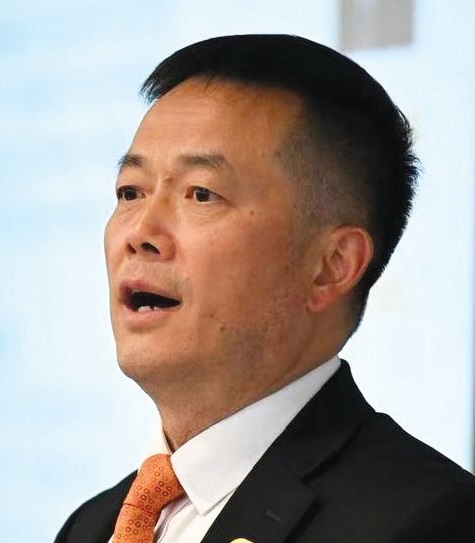 “India is a ‘must win’ place for us,” enthuses Sheng Rongsheng, CEO of Zenith’s International Business, highlighting the company’s commitment to supporting what executives view as the world’s most promising automotive market.
“India is a ‘must win’ place for us,” enthuses Sheng Rongsheng, CEO of Zenith’s International Business, highlighting the company’s commitment to supporting what executives view as the world’s most promising automotive market.
The timing reflects India’s automotive evolution success story. The country’s tyre industry is experiencing a remarkable transformation from traditional technologies to advanced radial systems, creating unprecedented opportunities for innovative steel cord solutions. This transition has generated significant demand while showcasing India’s unique engineering capabilities in adapting global technologies to local requirements.
Zenith’s expansion into India exemplifies positive global collaboration trends. As companies worldwide embrace supply chain diversification, the Chinese innovator’s investment in India demonstrates how international partnerships can deliver mutual benefits through technology transfer and competitive alternatives.
The initiative promises substantial advantages for Indian tyre manufacturers, including access to advanced manufacturing technologies, competitive pricing options and enhanced supply chain resilience. For Zenith, success in India represents validation of its evolution from regional producer to global technology partner.
With India’s automotive sector poised for continued expansion, this collaboration highlights how international expertise can support domestic growth while fostering innovation across the global tyre industry.
In the sprawling industrial complex of Huai’an, China, massive automated production lines hum with precision, producing fine steel cord that glistens like gold yet is strong enough to reinforce truck tyres that traverse India’s expanding highway network. This is the manufacturing heart of Zenith Steel Group’s ambitious global expansion, and India is squarely in its crosshairs.
The USD 28 billion Chinese steel conglomerate, which ranked 175th among China’s top 500 enterprises in 2022, is making calculated moves to capture a significant share of the global (and also India’s) growing tyre reinforcement materials market. With plans to reach 1.6 million tonnes of annual production capacity for high-strength steel cord, bead wire and hose wire, Zenith is positioning itself as a formidable competitor in a market currently dominated by a single established player.
“Our ambition is to become the leader in the worldwide steel cord industry, and needless to say, India plays a critical role in our global strategy given the fact that it has the largest population in the world, and therefore, we believe its market potential on top of today’s sizeable demand of about 200 kt a year is bigger than anybody else. So India is a ‘must win’ place for us,” says Sheng Rongsheng, CEO of Zenith’s International Business.
This strategic push comes at a time when India’s tyre industry is rapidly evolving, driven by infrastructure improvements, vehicle market growth and increasing tyre radialisation rates. The timing appears opportune but breaking into India’s notoriously challenging market will test Zenith’s technical capabilities, localisation strategies and cost competitiveness in what industry experts describe as one of the world’s most demanding tyre markets.
EVOLUTION OF INDIA’S STEEL CORD MARKET
India’s steel cord market has undergone dramatic transformation in recent decades, evolving from a predominantly bias tyre market to increasingly adopting radial technology, which requires steel cord reinforcement.
“The Indian market is one of the few markets where bias tyres have been successful and still are in certain segments. This is due to road and usage conditions like loading and tyre inflation pressures,” explains Srikanth Chakravarthy, Designated Partner and Managing Director of Zenith India, who is representing Zenith in India after spending over 25 years in the steel cord business. “However, over the last three decades, road infrastructure has evolved quite rapidly not only in terms of new roads but quality of highways as well. This helped radialisation and therefore the demand of steel cord in India.”
This transition has created significant market opportunities but also unique challenges. Indian tyre manufacturers have developed distinctively local requirements that differ from global standards, driven by the country’s specific road conditions and vehicle usage patterns.
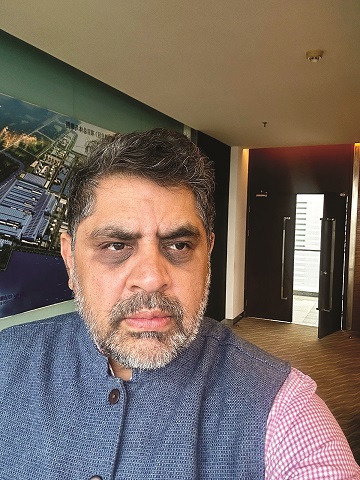 “Steel tyre cord itself has seen an evolution with initial designs being an outcome of international designs and choices and foreign collaborations. But Indian tyre makers were quick to study local requirements and design in-house leading to rapid product portfolio changes that saw the needle moving, for instance on tensile, from normal tensile to high tensile and now super and ultra tensile,” Chakravarthy notes. “The evolution has been also in terms of the design of cords that are more lightweight, stronger and now there is a big focus on sustainable solutions embracing circularity and reduced Co2 emissions.”
“Steel tyre cord itself has seen an evolution with initial designs being an outcome of international designs and choices and foreign collaborations. But Indian tyre makers were quick to study local requirements and design in-house leading to rapid product portfolio changes that saw the needle moving, for instance on tensile, from normal tensile to high tensile and now super and ultra tensile,” Chakravarthy notes. “The evolution has been also in terms of the design of cords that are more lightweight, stronger and now there is a big focus on sustainable solutions embracing circularity and reduced Co2 emissions.”
According to the company, Zenith is already engaging with multiple Indian tyre manufacturers including Apollo Tyres, MRF, JK Tyre, CEAT, BKT, ATG, MPTL (Ascenso) and Ralson, and also with international players like Yokohama, Goodyear, Bridgestone and Continental. Several companies including JK and BKT have confirmed homologation approvals, marking critical early success for Zenith’s market entry strategy.
Industry analysts estimate that India’s steel cord market is currently around 200,000 tonnes annually with significant growth, almost double, expected in the coming decade as vehicle ownership continues to expand and tyre radialisation rates increase, particularly in the commercial vehicle segment.
THREE-PRONGED STRATEGY
Zenith’s approach to the Indian market follows a carefully staged strategy that balances immediate export opportunities with long-term localisation goals. The company’s leadership team is clear about the methodical approach they’re taking.
“The approach can be divided into three parts,” explains Chakravarthy. “In the short term, the focus is on getting all approvals done quickly from the plant base in Huai’an. In the medium term, as commercial sales initiate, it is to offer outstanding service with warehousing, consignment stock, local technical service, co-development and efficient logistics. In the long term, the plan is to explore partnerships that enable a local footprint or a non-China-based footprint that can continue to offer the full value proposition with the added advantage of local presence.”
This methodical approach reflects Zenith’s understanding of Indian market requirements, where local presence is often a key differentiator. The company is already responding to specific customer requests for enhanced service offerings as Kelfen Zhu, International Sales Director, acknowledges, “Local warehousing has been mentioned by Indian customers, Zenith is seriously working on the solution.”
While the company currently manufactures in China with no production facilities in India, its leadership is clearly signalling future localisation plans that could include partnerships or direct investment. “To become No.1 in this market over time, there are two steps to go: first to become No.1 among all the import players, then when condition allows, to build up local production capacity and eventually become No.1 among all the steel cord suppliers to this market,” shares Rongsheng, outlining the company’s ambitious goals.
The timeline for such moves remains undefined but appears to be part of a long-term vision rather than an immediate priority. Chakravarthy suggests, “As mentioned before, this is part of the long-term strategy and we are already talking to several local players. In time, this dialogue will take shape with the right partner and India will get a very strong alternative that allows it to offer higher value to the automotive OEMs and replacement market.”
QUALITY MANAGEMENT: THE CORNERSTONE OF CUSTOMER ACQUISITION
For Zenith, quality management represents the foundation of its customer acquisition strategy in India. The company received IATF 16949 certification in February 2024 alongside ISO 9001, ISO 14001 and ISO 45001 certifications – credentials that are essential for supplying to global and Indian tyre manufacturers.
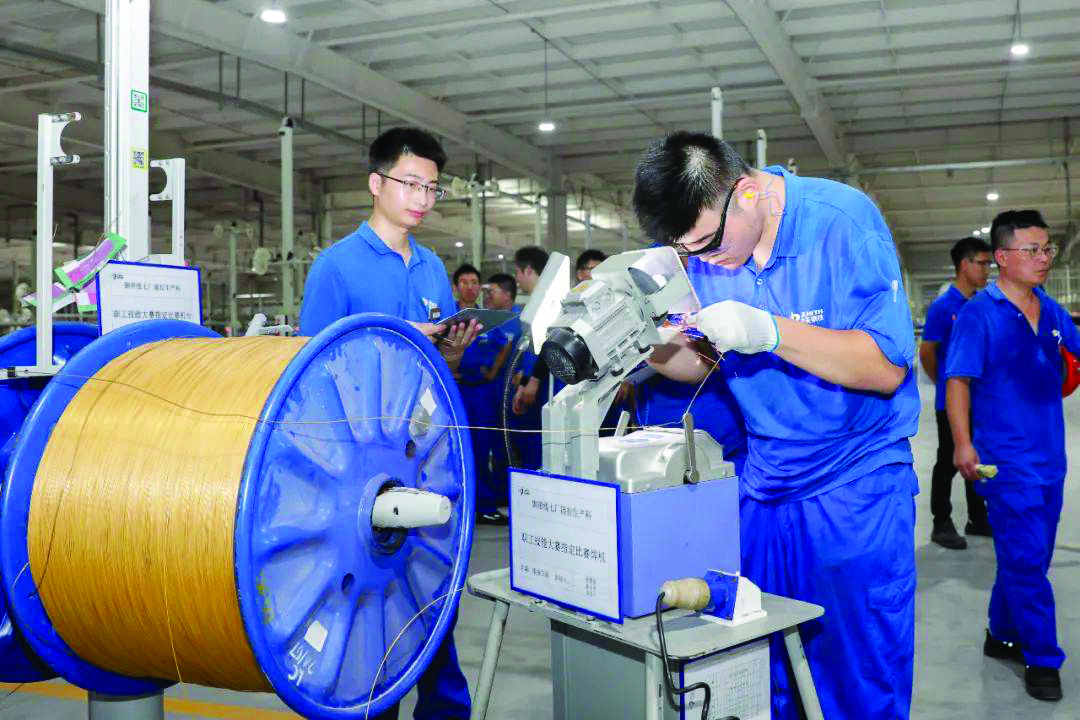
“Zenith is committed to building a robust quality management system that is customer-centric, process-oriented and integrates advanced digital solutions to realise full-process traceability and intelligent decision-making based on AI model,” states Bian Keping, Quality Manager at Zenith Steel.
This quality management system adopts both reactive and pro-active approaches to customer feedback. “For reactive way, we respond quickly to customer complaint if and when some failure happened at customer side. The systematic problem-solving mechanism, i.e. 8D methodology, would be triggered to resolve the issues. For pro-active way, we collect customers’ voice via plant visit, technical forum, questionnaire etc. we also seek feedback with an open mind when customers visit us for audits and visit. All VOC will be seriously summarised, analysed and archived to guide both product development and process improvement process,” says Keping. The company claims particular innovation in addressing common defect issues that plague tyre manufacturers. Keping adds, “Till now, Zenith doesn’t have local plant in India. For plants in China, we have introduced lots of error-proof solutions to cope with typical defects at customers sides, e.g. short-length, broken welding, cord formation defects and etc., which can definitely enhance customer satisfaction in India.”
One specific innovation highlighted by the quality team is particularly relevant to Indian manufacturing conditions. “Especially for tip-rise issue, Zenith is the first steel cord manufacturer world-wide to realise non-manual testing of residual torsion of TC spool, which can improve the accuracy and reliability of torsion testing results and significantly reduce the risk of tip-rise,” says Keping. This focus on tip-rise issues appears strategically targeted as Zhu confirms. “Tip-rise is a concern for customers right from trial stage. Professional local technical presence can clear the concern with immediate post-sales follow up and communication,” he says.
R&D CAPABILITIES: ADDRESSING INDIA’S UNIQUE REQUIREMENTS
Zenith’s research and development strategy for India focuses on developing products that address specific challenges in the Indian market, particularly the need for tyres that can withstand heavy loads, variable road conditions and cost pressures.
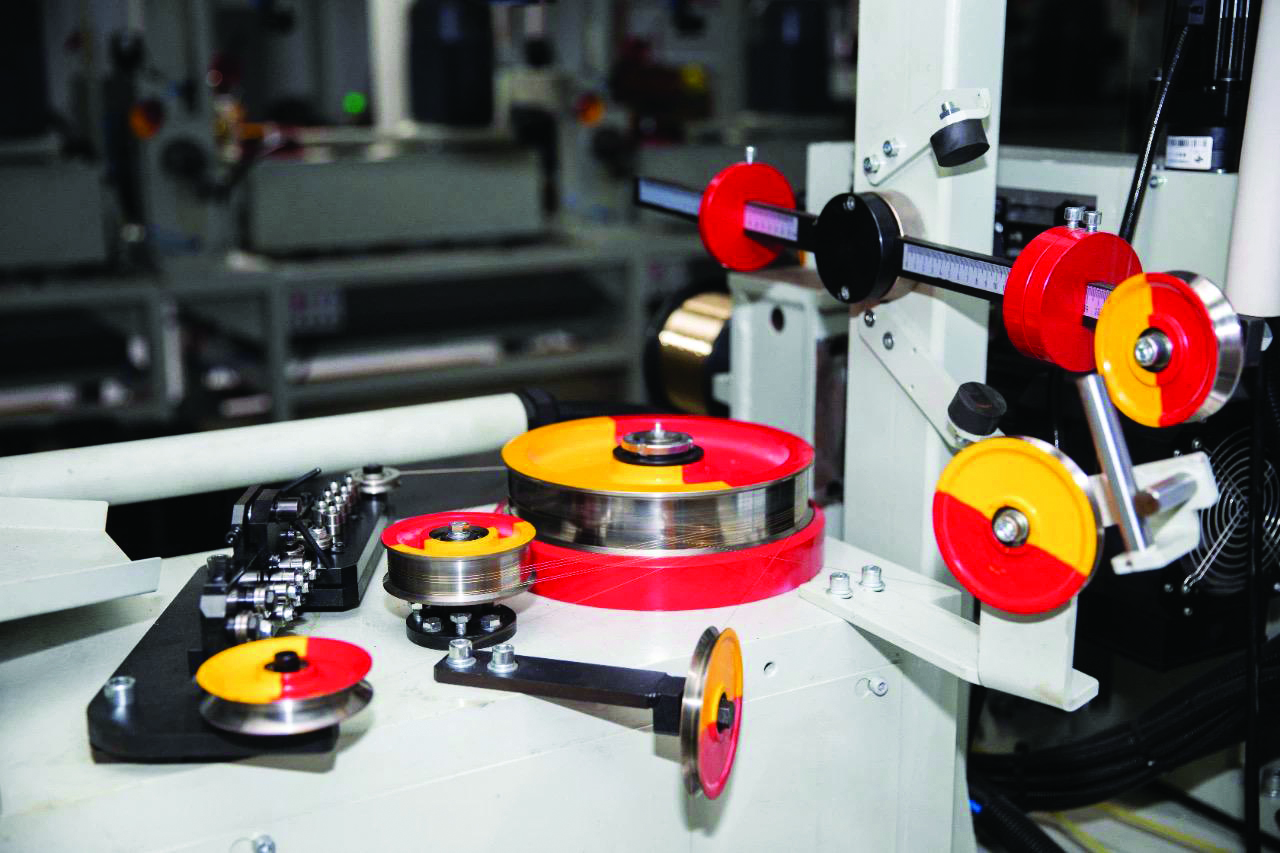
Dr Wang Aiping , Head of R&D at Zenith, outlines the company’s approach: “Our approach is to develop higher strength steel cord such as ST/UT and new steel cord with better fatigue performance. We will also develop customised steel cord with certain requirements like better rubber penetration and provide advanced test service such as aged adhesion, fatigue, rubber penetration etc.”
The company appears to be investing significantly in its research and development capabilities for the Indian market with Dr Aiping indicating that at least three percent of sales income will be allocated to R&D expenditures focused on Indian operations, depending on the progress.
This research and development strategy emphasises both performance and cost considerations, reflecting an understanding of the unique price-performance demands of the Indian market. “We will focus more on both steel cord strength and fatigue performance with tyre overload condition. We will also acquire experienced senior steel cord application expertise,” Dr Aiping notes when describing how Zenith’s research and development approach differs from competitors in addressing Indian market needs.
The integration of sustainability into product development also appears to be a key differentiator for Zenith’s research and development strategy. The company is developing a carbon emission management platform tailored for Indian industries to help monitor, report and reduce emissions, supporting compliance with national ESG and carbon credit regulations. “Our research and development efforts are focused on higher strength steel cord development including ultra-tensile (UT) and mega-tensile (MT) variants, which reduce material usage and enhance fuel efficiency for automotive applications,” notes Dr Aiping.
Zenith is also introducing steel cords manufactured from high scrap ratio wire rods (≥60%), promoting circular manufacturing and reducing the carbon footprint in line with India’s green steel and recycling policies.
It is evident that tyre manufacturers globally are increasingly focused on sustainability metrics, driven by both regulatory requirements and market demand for reduced environmental impact. Zenith’s emphasis on carbon footprint measurement and recycled content appears designed to address this emerging requirement in the Indian market.
THE INTELLIGENT FACTORY
Zenith’s manufacturing capabilities represent a central pillar of its value proposition to Indian customers. The company has invested heavily in creating what it describes as an ’Intelligent Factory’ in Huai’an, featuring advanced robotics, automated material handling systems and advanced process controls.
Chakravarthy, who has extensive experience in the steel cord industry, makes a bold claim about these facilities stating, “I have spent nearly 2.5 decades in the steel cord business and I have not seen a plant as modern, efficient and sophisticated in the steel cord business like the Zenith plant in Huai’an.”
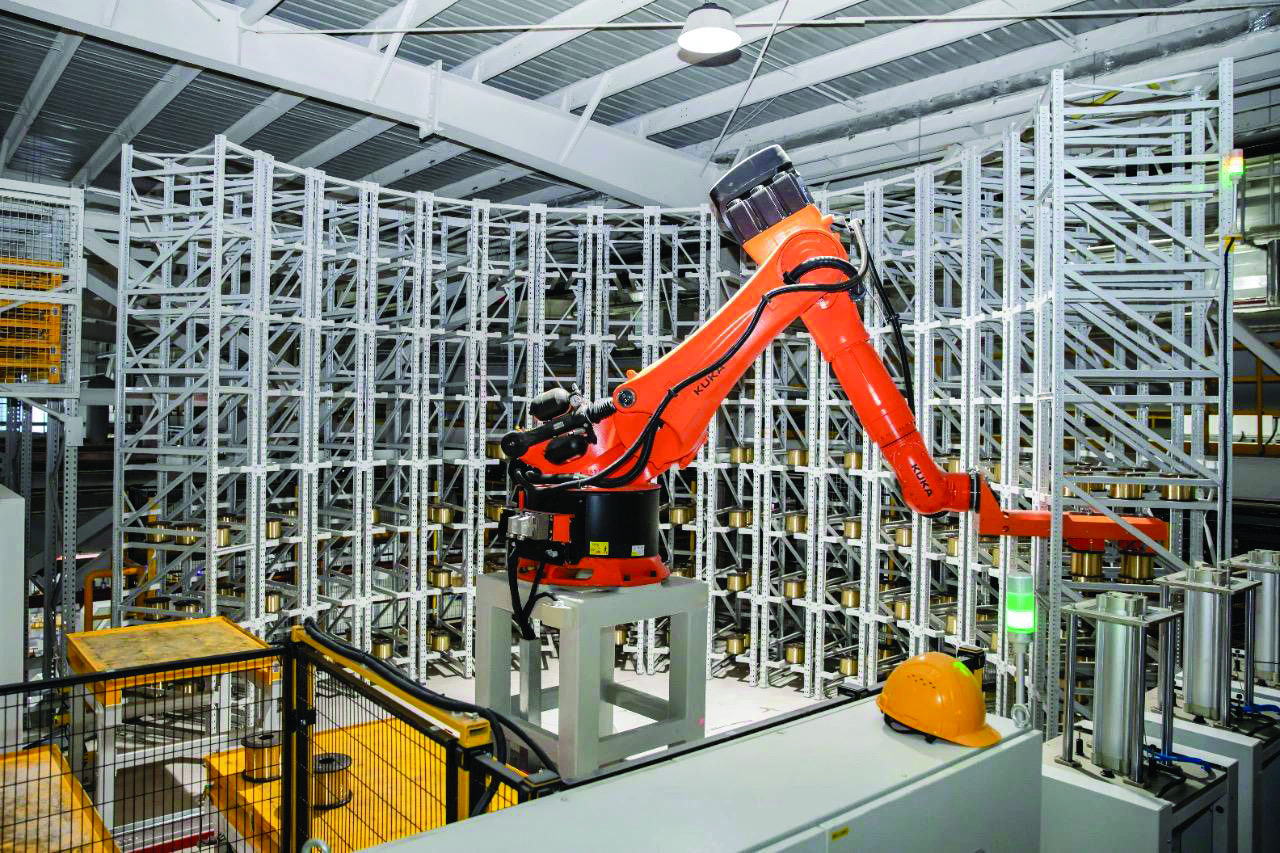
This manufacturing sophistication appears designed to address two critical requirements for the Indian market, namely consistent quality and cost competitiveness. The automated systems promise reduced variability, while scale and efficiency aim to deliver competitive pricing despite the logistical challenges of serving India from China.
A distinctive feature of Zenith’s manufacturing approach is its emphasis on traceability and carbon emissions management. The company has developed what it calls an ‘Integrated Carbon Emission Management System’ that provides product carbon footprint data at the SKU level with third-party verification. This system allows Zenith to provide tyre manufacturers with detailed emissions data for their supply chain reporting – an increasingly important consideration for global tyre companies and their automotive customers.
“Zenith invested much more in automation and digitalisation than any other competitors. With these technologies in place, we can definitely create extra value for our customers. One example here is the product traceability, and we are the only one in the industry who is able to realise full process information traceability, from the wire rod to the finished goods,” notes Rongsheng when discussing important technology transfers to Indian operations.
Industry experts observe that manufacturing scale is increasingly important in the capital-intensive steel cord industry, where economies of scale drive cost competitiveness. Zenith’s ambitious capacity expansion plans, which will see it reach 1.6 million tonnes of annual production capacity across multiple plants, position the company as the largest global producers of steel cord and bead wire.
CHALLENGE OF COST COMPETITIVENESS
Despite its technological and quality advantages, Zenith faces significant challenges in achieving the cost competitiveness demanded by Indian tyre manufacturers, who operate in one of the world’s most price-sensitive markets.
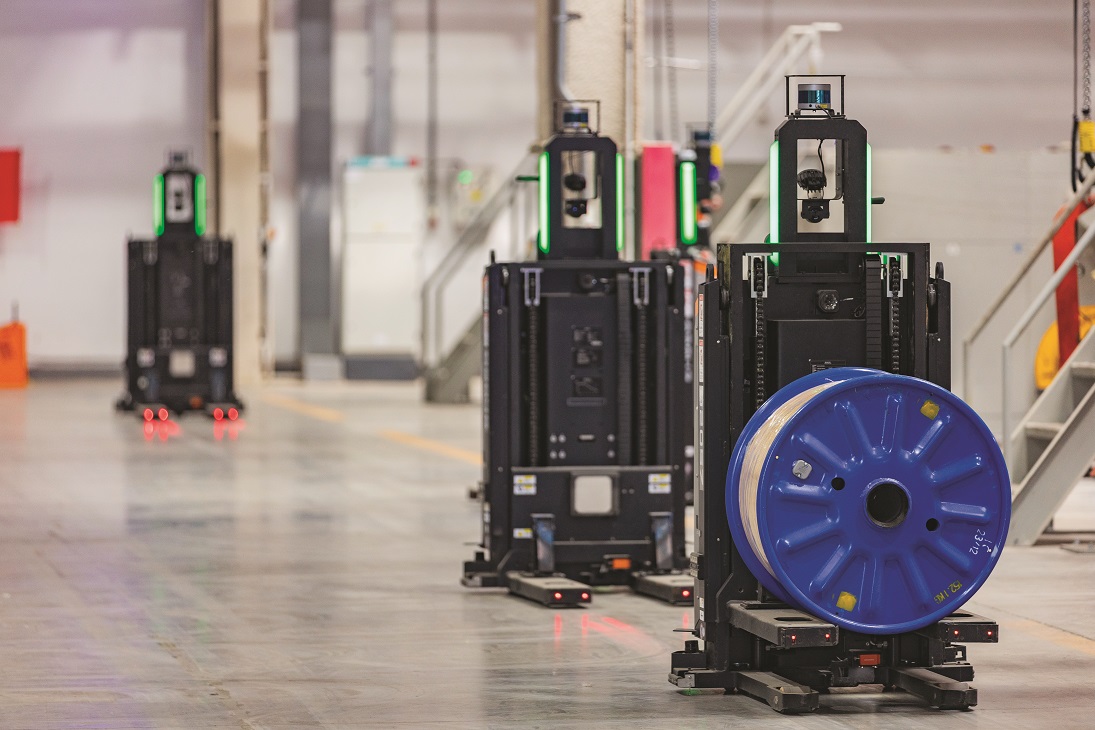
Chakravarthy is forthright about this challenge. He says, “A challenge of local steel cord being cost competitive with international options is a matter of concern to the tyre industry. Also, the world of technology is rapidly evolving, and we must acknowledge that in this industry the Chinese players have made significant strides and therefore offer an equally superior infrastructure and sustainable solutions, but scale of economy will be a challenge for time to come.”
Indian tyre customers have particularly demanding requirements as Chakravarthy explains. “Indian tyre makers have a unique challenge to make the best tyre that is abuse proof, high performing, absolutely reliable, sustainable, safe, giving the best fuel efficiency and longest tyre life at the lowest cost. It might sound ridiculous, but this is reality, and Indian tyre makers have constantly risen to this challenge and developed the radial tyre market this way,” he says.
Meeting these challenging requirements while maintaining competitive pricing is the central challenge for Zenith’s India strategy. Chakravarthy emphasises that Indian customers expect steel cord partners to have a focus on innovation, consistent quality (low variations), intervention-free processability, traceability of carbon emissions, recycled content in steel cord without compromising quality and above all cost competitiveness.
BUILDING LOCAL PRESENCE
Recognising the importance of local presence, Zenith is planning to establish a technical and commercial team in India in the second half of 2025. “A professional local team with senior experts from industry will be built in H2 2025,” according to Zhu.
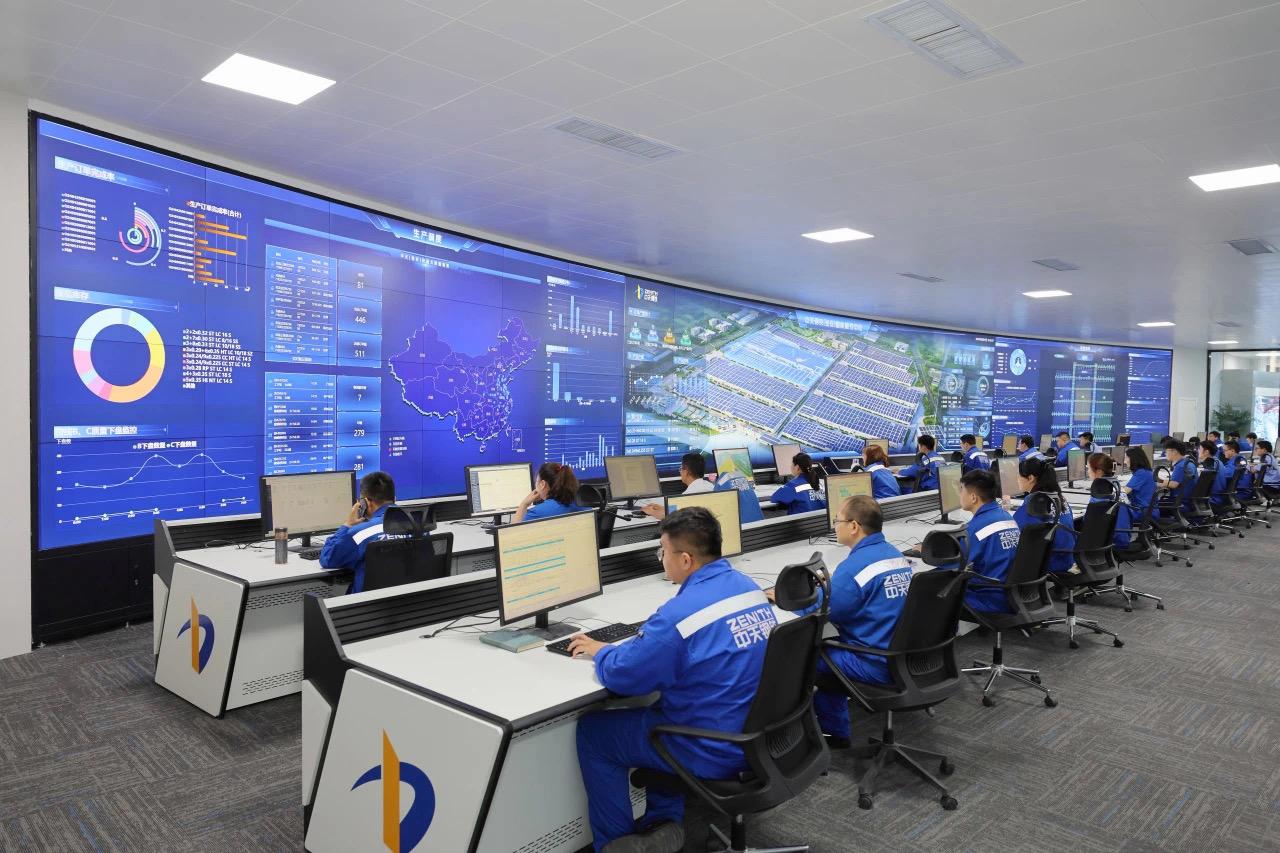
In the meantime, the company is leveraging its regional presence with Zhu noting that Zenith’s customer service representatives in SEA countries can back up Indian market whenever required.
This gradual approach to building local presence appears designed to match resources with market development progress. Chakravarthy acknowledges that it is only three months that he is associated with Zenith and the focus is on introducing the company, having tyre customers visit and audit the facility as they conduct approvals. “Our talent acquisition and development will be based on the various stages of growth as mentioned earlier and we will not settle for anything less than the best,” he says.
The company’s commitment to local presence seems rooted in an understanding of the Indian market’s preference for local technical support and service responsiveness. “Think global and act local is the way to go,” says Rongsheng. “We understand that India is a very demanding market; we will for sure deliver our products with the best quality, in cooperation with Sri and his team, who is by far the best local partner we could have in this region. As time goes by, we will build up local warehouses in order to foster delivery flexibilities to our customers,” he adds.
A STRATEGIC DIFFERENTIATOR
A distinctive feature of Zenith’s market approach is its design integration on sustainability and carbon emissions. The company transports its wire rod by water ways, reducing its C02 emissions per tonne per km significantly vs road transport. The use of energy efficient motors, solar power on site, optimal plant layout maximising efficiency with Co2 capture at every stage is what sets the Huai’an plant apart. This, coupled with the deployment of sophisticated systems for tracking and reporting carbon emissions throughout the production process, offers tyre manufacturers detailed data for their sustainability reporting.
The company’s investments in sustainability technologies reflect growing market demand for environmentally responsible manufacturing practices. One of the biggest challenges for carbon emission management is to understand carbon emission in Scope 3. The carbon emission management system of Zenith integrates all product carbon footprint data throughout the supply chain, from raw material sourcing to product distribution.
GLOBAL COMPETITION AND MARKET POSITIONING
Zenith’s push into India comes amid broader global trends of supply chain diversification and regionalisation in the steel and automotive supply chains. Global trade tensions, shipping disruptions and sustainability considerations are all driving tyre manufacturers to seek more resilient and localised supply networks.
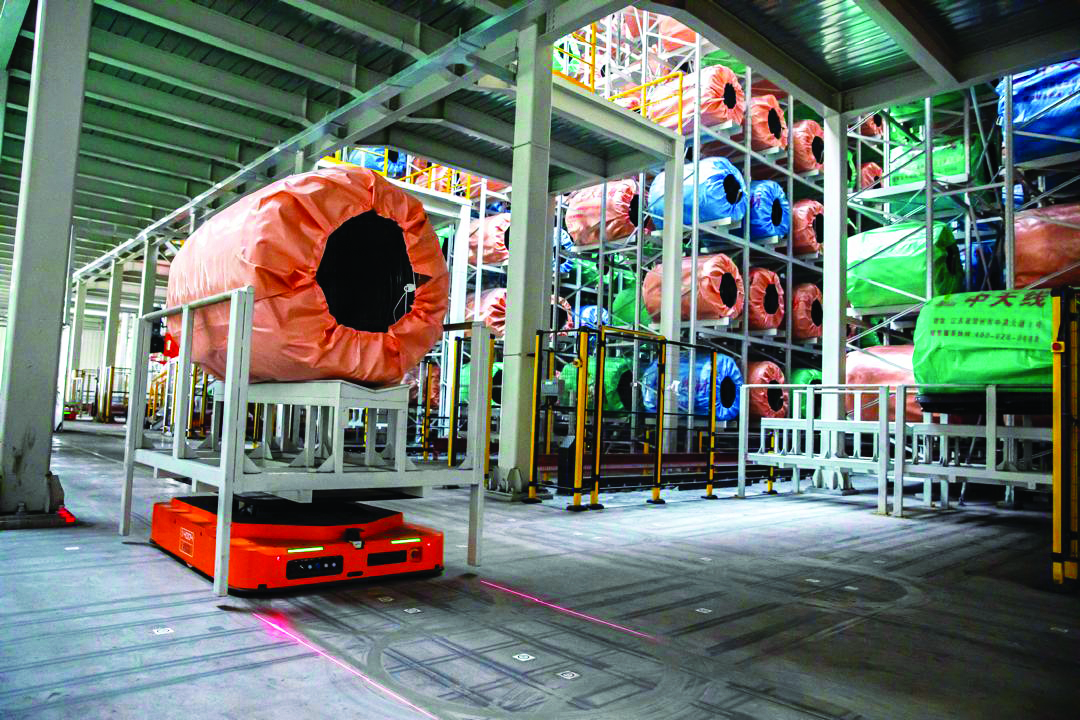 This context creates both opportunity and urgency for Zenith’s India strategy. On one hand, tyre manufacturers are actively seeking supply alternatives to reduce concentration risk. On the other hand, competitors are also pursuing similar strategies, creating a race to establish market position.
This context creates both opportunity and urgency for Zenith’s India strategy. On one hand, tyre manufacturers are actively seeking supply alternatives to reduce concentration risk. On the other hand, competitors are also pursuing similar strategies, creating a race to establish market position.
The company’s aggressive capacity expansion in China – investing in projects totalling 1.6 million tonnes of annual production, a full-fledged R&D facility, integrated steel manufacturing, access to harbour, talented work force – positions it to serve not only India but global markets too. This scale could provide advantages in new technology development, raw material sourcing and manufacturing efficiency that benefit the Indian business.
However, relying exclusively on exports from China also creates vulnerability, particularly if trade tensions or shipping constraints resurface. This reality likely explains Zenith’s interest in eventually establishing non-China production capacities, potentially including India itself.
Industry experts note that India’s government has been actively encouraging greater localisation of manufacturing across various industries including automotive components. This policy direction could create both incentives and pressures for Zenith to accelerate its plans for local production capabilities in India.
CUSTOMER ENGAGEMENT
Zenith’s approach to the Indian market emphasises close technical collaboration with tyre manufacturers, recognising the unique requirements of the Indian market and the value of co-development in addressing these needs.
“We organise technical forum with customers’ research and development team to listen to their concerns and feedback. For some critical issues, management team will assign corresponding resource to cope with,” the company’s Quality Manager notes when describing collaboration with research and development to improve product quality.
This collaborative approach appears designed to address the specific technical challenges faced by Indian tyre manufacturers, who must design products for uniquely challenging operating conditions. “Indian customers value reliability, cost-effectiveness and localised post-sales support. Zenith prioritises trust-building through transparent communication, joint problem-solving and tailor-made new product development,” notes Zhu.
“The company’s research and development team is also focused on supporting this collaborative approach with plans to have regular technical meeting and build-up co-operation project with certain customer,” according to Dr Aiping.
GROWTH PROJECTIONS
Zenith’s current production capacity and expansion plans are substantial, reflecting the company’s global ambitions. According to the company, Zenith expects to reach around 500,000 tonnes of sales in 2025 and over 800,000 tonnes in 2026. This rapid scaling of production capacity underscores the company’s global ambitions.
The company’s manufacturing facilities are organised into multiple plants, each focusing on specific product lines:
- Plant 1: 240,000 tonnes/year of steel cord (full operation)
- Plant 2: 300,000 tonnes/year of bead wire (3/6 lines installed)
- Plant 7: 280,000 tonnes/year of steel cord (800 tonnes/day)
- Plant 6: 280,000 tonnes/year of steel cord (construction started in April 2024)
- Plants 3 and 5: 500,000 tonnes/year of steel cord (to be launched in 2025/2026)
This capacity expansion is backed by substantial investment with the company noting that it will invest over USD 140 million on its research and development centre to make sure it will remain a winner tomorrow. ”Zenith’s state-of-the-art production facilities and its very experienced team guarantee high product quality as well as stability. Because of its large production capacity, Zenith has a strong economy of scale and therefore is able to offer very competitive prices to Indian customers. Zenith will invest over USD 140 million on its research and development centre to make sure it will remain a winner tomorrow,” adds Rongsheng.
AMBITIONS AND REALISM
Zenith’s ambitions for the Indian market are clearly substantial, but so are the challenges. The company faces competition not only from the established local player but also from other global steel cord manufacturers eyeing India’s growth potential.
Chakravarthy sees the opportunity for Zenith to become a very strong alternative that allows India to offer higher value to the automotive OEMs and replacement market. He suggests that what Zenith could offer the Indian tyre industry is an extremely cost-competitive source that is able to provide the most modern technology, efficiency, highest levels of quality, deep innovation and enough volumes to support the growth of Indian market requirements in the years to come.
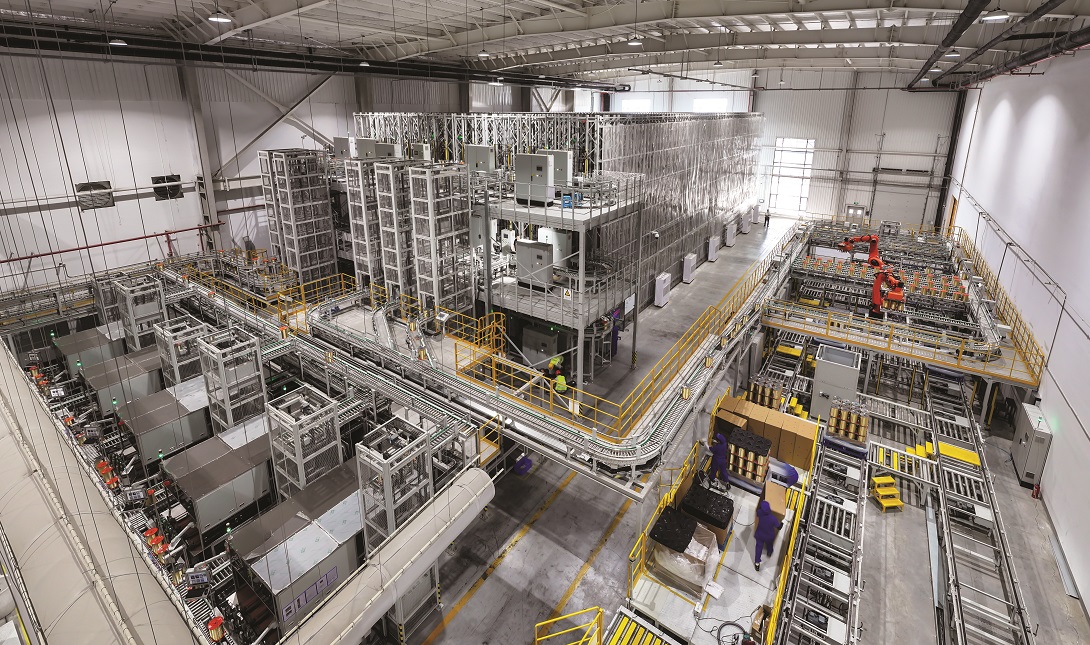
However, realising this vision requires executing across multiple dimensions simultaneously including building customer relationships, establishing local presence, ensuring cost competitiveness and eventually pursuing local manufacturing partnerships.
The company’s leadership appears clear-eyed about both the opportunities and challenges. “India can only become more important for Zenith in the future. It’s a growing market and the demand is going up every year. You cannot find this promising trend in those mature or developed markets,” says Rongsheng.
For the Indian market specifically, success will ultimately be measured by commercial performance and customer acceptance. While several Indian tyre manufacturers are already engaging with Zenith for approvals and trials, converting these initial engagements into substantial, regular supply relationships represents the true test of the company’s strategy.
As Chakravarthy puts it, “Being a steel cord player, where approvals themselves take a couple of years or more, requires a long-term vision and commitment. The level of commitment can simply be measured by how much investment a company is making for catering to the future needs of the industry. Zenith’s investments are not only towards securing volume needs of the Indian tyre industry but also fulfilling evolving technological, quality, sustainable and economic viability needs. “
A NEW FORCE
As Zenith advances its India strategy, the company appears poised to become a significant force in the country’s steel cord market. Its combination of manufacturing scale, technical capabilities and strategic focus on Indian requirements positions it well to challenge existing suppliers and support the continued growth of India’s tyre industry.
“It is not an easy road, and the only way to succeed is to collaborate with the best in the industry who can address all these aspects, not just some of these aspects,” Chakravarthy observes, capturing both the opportunity and challenge that lies ahead for Zenith in India.
For Indian customers, Zenith’s entry marks the first ever steel cord supplier who is backward integrated with steelmaking offering complete control on quality and scale and capacity and thereby supports a unique value proposition built on the principles of quality, sustainability, innovation, service and cost competitiveness. For Zenith, success in India represents not just a commercial opportunity but a strategic imperative as the company seeks to transform from a China-focused producer to a truly global steel cord supplier.
As the company enters its next phase of market development in India, all eyes will be on its ability to deliver on the twin promises of quality and cost competitiveness that define success in this demanding market. With its ambitious capacity expansion plans, investments in advanced manufacturing technologies and growing engagement with Indian customers, Zenith appears determined to establish itself as a long-term player in India’s evolving steel cord landscape.
“India presents a growth market in the long term with a strong case for doubling its steel cord demand within the decade. Unlike some global manufacturing platforms that are largely export dependent, India has a healthy domestic market with a continued and healthy growth projection both for domestic and exports,” Chakravarthy noted, summarising the strategic rationale behind Zenith’s India push.
In the global context of supply chain diversification and growing emphasis on sustainability, Zenith’s investment in India reflects broader trends reshaping the steel and automotive supply chains. The company’s success or failure in India will serve as a case study in how Chinese manufacturers can navigate the complex process of expanding beyond their home market into challenging but potentially rewarding growth markets.
As one industry analyst put it, “The entry of players like Zenith brings much-needed competition to India’s steel cord market. If they can deliver on their promises of quality, cost and eventually local manufacturing, Indian tyre makers stand to benefit significantly from an expanded and more competitive supplier base.”
The months and years ahead will reveal whether this confidence is justified and whether Zenith can translate its ambitious plans into market reality in one of the world’s most challenging and promising tyre markets.
THE PATH FORWARD: STRATEGIC IMPERATIVES AND CHALLENGES
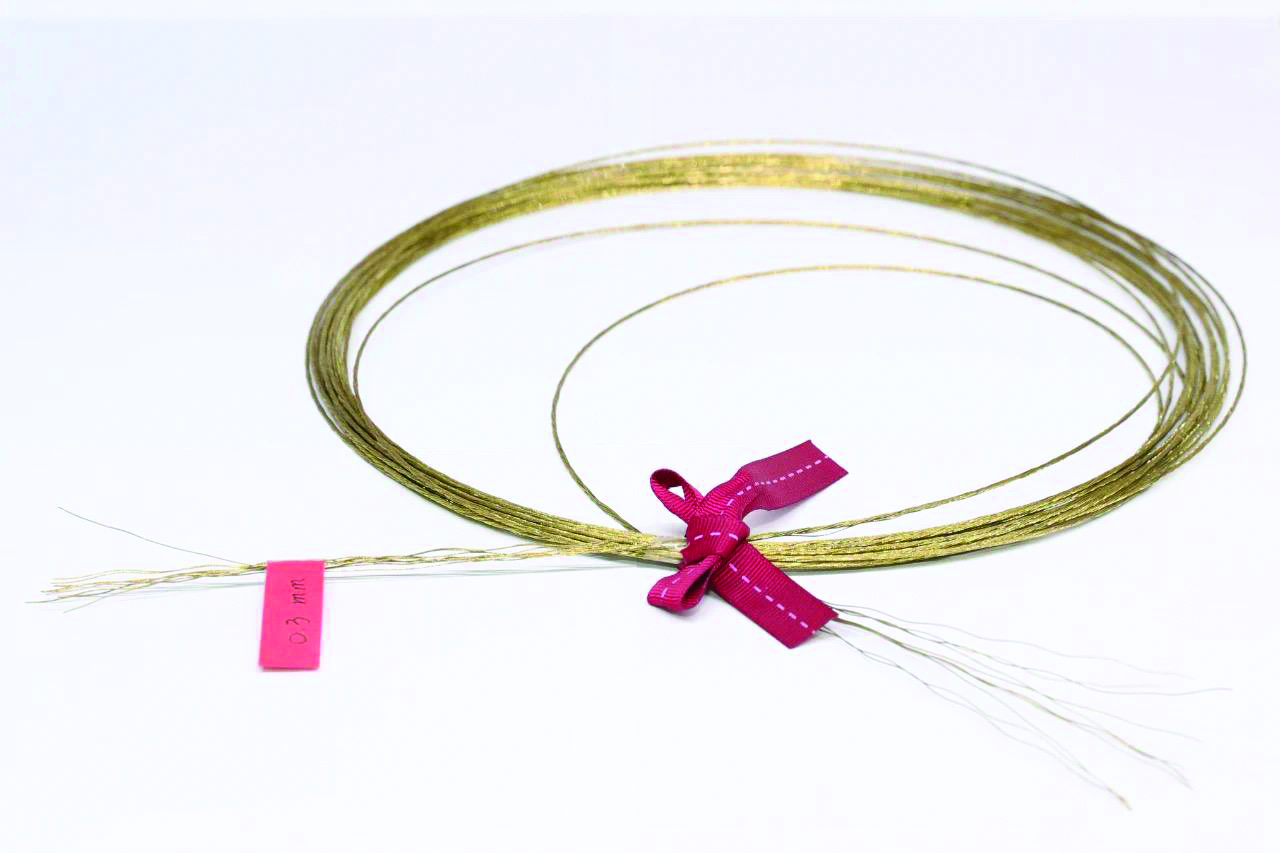
As Zenith advances its India strategy, several key imperatives and challenges emerge from the company’s approach:
1. Balancing global scale with local adaptation: Zenith must leverage its global scale while adapting to the specific requirements of the Indian market. “Think global and act local’ is the way to go,” as Rongsheng puts it.
2. Establishing local presence: Building a local technical and commercial team will be crucial for addressing Indian customers’ expectations for responsive service and support. “Professional local team with senior experts from industry will be built in 2H’2025,” according to Zhu.
3. Ensuring cost competitiveness: Despite technological advantages, Zenith must deliver competitive pricing to succeed in India’s price-sensitive market. “The Indian consumers are a price and value sensitive market, and therefore it is not sufficient to just have a local footprint without addressing the key questions of cost competitiveness, sustainability and technology sufficiently,” Chakravarthy notes.
4. Developing market-specific products: India’s unique road conditions and vehicle usage patterns require specialised steel cord solutions. “To consider both steel cord strength and fatigue performance with tyre overload condition,” Dr Aiping emphasises.
5. Building long-term partnerships: Success in India will require strong relationships with tyre manufacturers and potentially local manufacturing partners. “In time, this dialogue will take shape with the right partner and India will get a very strong alternative that allows it to offer higher value to the automotive OEMs and replacement market,” Chakravarthy suggests.

The rollout of GST 2.0 marks a defining moment in India’s economic journey – a reform that may well prove even more consequential than the original introduction of the Goods and Services Tax. Especially for a sector like tyres, the recent reduction in (GST) on tyres is far more than just a change in numbers. It is a transformative step that touches every wheel turning on India’s roads – from a farmer’s tractor to a trucker’s long-haul trailer and from a commuter’s scooter to a construction vehicle powering the nation’s infrastructure.
For years, tyres were taxed at 28 percent – the highest GST slab, clubbed with luxury and demerit goods. This categorisation never truly reflected the essential role tyres play in our everyday lives. Tyres are not a luxury. They are a fundamental enabler of mobility, supporting the movement of people and goods across cities, towns and villages. By bringing GST rates on tyres down to a more rational level, the government has addressed a long-standing anomaly and set the stage for widespread benefits across the economy.
The most visible impact of this move will be felt on the ground – literally. Lower GST means more affordable tyres for all users. Especially for transporters and fleet operators, tyres account for a significant chunk of vehicle running costs. A reduction in tax translates into lower replacement costs, freeing up working capital and improving operational margins. Farmers, small traders, delivery personnel, service providers, transporters – every segment that relies on mobility will feel this relief.
India has been working hard to bring down logistics costs, which are believed to be about 13–14 percent of GDP – much higher than global benchmarks. Tyres have a direct bearing on vehicle operating efficiency, fuel consumption and maintenance schedules. When tyres become more affordable, operators can replace tyres on time, and run vehicles more efficiently.
This naturally leads to lower logistics costs. Reduced logistics costs ripple across the value chain, helping industries move goods faster and at lower cost. This aligns perfectly with India’s ambition to become a more globally competitive manufacturing and trading hub.
Tyre industry’s story is not just urban – it’s deeply rural as well. Tractor tyres, power tiller tyres and tyres for animal-drawn vehicles are integral to the agricultural economy. A reduction in GST brings meaningful relief to farmers and small cultivators who rely on these tyres for their daily operations. By easing this cost, the government has extended direct support to rural mobility and agricultural productivity – an often underappreciated but critical outcome of this reform.
One of the most powerful yet often overlooked impacts of this decision lies in road safety. Worn-out tyres are a major cause of road accidents, particularly on highways. High replacement costs often lead to tyres being used well past their safe life.
With lower GST making new tyres more accessible, both individual motorists and commercial fleet owners are more likely to replace tyres on time, keeping vehicles safer and reducing accident risks. This complements the government’s broader road safety agenda, making highways not just faster but safer for everyone.
For the Indian tyre industry, which is one of the largest in the world, this reform is a game changer. It creates a more balanced tax structure, supports better cash flow, improves compliance and strengthens the competitiveness of domestic manufacturers. It will also encourage investment and capacity expansion, enabling the industry to serve growing domestic demand and tap export opportunities more effectively.
The GST reduction on tyres is a strategic, forward-looking policy decision that will benefit the entire mobility ecosystem. It acknowledges the essential role tyres play – not just as a product, but as a critical enabler of transportation, logistics, rural livelihoods and road safety.
As this reform takes root, its positive impact will be felt by consumers, businesses, farmers and industries alike. The tyre industry, represented by ATMA, welcomes this move wholeheartedly and remains committed to working alongside the government to strengthen India’s journey towards affordable, efficient and safe mobility for all.
The author is Director General of the New Delhi-based tyre industry association, Automotive Tyre Manufacturers’ Association (ATMA).The views expressed here are personal.
WACKER Secures Gold Medal In EcoVadis Sustainability Rating
- By TT News
- December 18, 2025

WACKER has earned the 2025 Gold Medal from the independent rating agency EcoVadis, marking its continued recognition for sustainable practices and responsible corporate governance. This distinction places the company within the top five percent of all businesses assessed by EcoVadis (over 1,000 companies globally). WACKER's overall score improved from 77 points (in 2024) to 79 points, driven largely by enhanced reporting and concrete actions focused on Scope 3 emissions and ethical standards.
The EcoVadis assessment measures the quality of a company’s sustainability management through a methodology grounded in international frameworks like the Global Reporting Initiative, the UN Global Compact and ISO 26000. Performance is scored from 0 to 100 across four core areas: environment, labour and human rights, ethics and sustainable procurement, using 21 specific indicators.
In line with its commitment, WACKER provides its EcoVadis evaluation to customers as a standardised and credible validation of its sustainability efforts. The company has also defined ambitious climate targets, aiming to halve its absolute greenhouse gas emissions by 2030 relative to 2020 levels. Progress is already evident, with a 30 percent reduction achieved as of 2024. Looking further ahead, WACKER strives to reach net-zero emissions across its operations by the year 2045.
Peter Gigler, Head of Corporate ESG, WACKER, said, “The result confirms our initiatives in many key areas. It provides our customers with invaluable proof.”
Craig Borman Appointed As Head Of OTR At BKT USA
- By TT News
- December 18, 2025

Balkrishna Industries Ltd (BKT Tires), a global leader in off-highway tyre manufacturing, has appointed Craig Borman as Head of OTR at BKT USA. The appointment is in line with BKT’s long-term strategy through 2030.
Borman brings with him 20 years of experience across off-road equipment, tyres and rubber tracks. He will play a key role in leading BKT USA's OTR team and expanding the company's presence in this market while increasing awareness of the value and dependability of BKT's range of products.
Borman said, “I’m extremely excited to join the BKT family and to build off the successes that this team has already achieved. I look forward to engaging with our partners, determining how we can accelerate our mutual growth and working towards achieving BKT’s vision of being a recognised leader in the OTR segment.”
Christian Kötz To Succeed Nikolai Setzer As Continental CEO In Planned Handover
- By TT News
- December 18, 2025

The Supervisory Board of Continental AG confirmed a significant leadership transition during its meeting on 17 December 2025. Christian Kötz will be appointed as the new Chairman of the Executive Board and Chief Executive Officer, effective 1 January 2026. He succeeds Nikolai Setzer, who will step down from the Executive Board on 31 December 2025. Setzer's departure follows more than 16 years as a board member, including the last five years in the CEO role, and occurs by mutual agreement as the company reaches a pivotal point in its strategic evolution.
This planned change in leadership aligns with the substantial progress Continental has made in its transformation into a pure-play tyre company. Major structural milestones have been achieved, including the spin-off of Aumovio and the signing of an agreement to sell the Original Equipment Solutions (OESL) business area. Regarding the planned 2026 sale of ContiTech, internal preparations are largely complete. The market outreach phase has concluded, and a structured sales process is scheduled to begin in January 2026, setting the stage for the final step in the corporate realignment.
Kötz’s extensive background within the tyre business, dating back to 1996, positions him to lead this final phase. A member of the Executive Board since 2019, his previous leadership roles within the Tires group sector included responsibility for the passenger car tyre replacement business in the EMEA region, the original equipment and commercial vehicle tyre business units and global research and development for passenger car tyres. His many years of trusted collaboration with Nikolai Setzer are expected to ensure continuity during the transition.
Kötz will lead an Executive Board comprising several key figures. Alongside him and Philip Nelles, who has headed the ContiTech group sector since 2021, are Roland Welzbacher and Ulrike Hintze. Welzbacher joined the board in August 2025 and assumed the role of Chief Financial Officer on 1 October 2025. Hintze was appointed to the board on 1 July 2025, serving as Chief Human Resources Officer and Director of Labour Relations. This board will be responsible for driving the tyre business forward, completing the corporate realignment and, following the sale of ContiTech, integrating the remaining group functions into the tyre organisation.
Wolfgang Reitzle, Chairman of Continental’s Supervisory Board, said, “Nikolai Setzer has been instrumental in shaping Continental, realigning the organisation and paving the way for three strong, independent companies. For this, he has the thanks of the entire Supervisory Board as well as my personal gratitude. With this handover, we are consolidating responsibility for the tyre business, the realignment and the remaining tasks of the group functions in one role. Christian Kötz is one of the most distinguished managers in the global tyre industry. With his extensive experience and passion for Continental, we firmly believe he is the right choice to lead the company successfully into the future.”
Setzer said, “In recent years, we have succeeded in transforming a diverse portfolio of businesses into three strong, independent champions. After 28 years at Continental, now is the right time for me to hand over responsibility to Christian Kötz. I’m extremely grateful for the journey we’ve all shared and proud of what we’ve all achieved together. I firmly believe that the tyre business, ContiTech, Aumovio and OESL have a promising future ahead.”
Kötz said, “I would like to thank the Supervisory Board for its trust and am excited about this new responsibility. Continental has been my professional home for three decades. Together with the Executive Board team and all colleagues throughout the company, we will complete the realignment and continue the success story of our tyre business.”







Comments (0)
ADD COMMENT